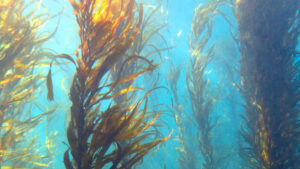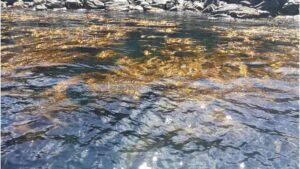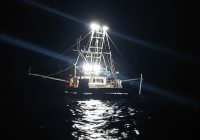“The number of living creatures of all orders, whose existence intimately depends on the kelp, is wonderful,” so wrote Charles Darwin in The Voyage of the Beagle.
And the famous scientist was right. His words, written in 1839, still ring true today.
Giant kelp forests are one of the most productive ocean ecosystems on the planet, supporting an incredible diversity of plants and animals.

Helping to restore vital giant kelp forests to local coastlines is about to get easier for recreational fishers in Tasmania, Victoria, South Australia and New South Wales, with the launch of an enhanced version of the Kelp Tracker web-based platform.
Kelp Tracker 2.0 is a collaborative project between OzFish Unlimited, Australia’s only recreational fishing charity, The Nature Conservancy, the Victorian National Parks Association, the Institute for Marine and Antarctic Studies (IMAS) at the University of Tasmania, and BCF – Boating, Camping, Fishing.
Initially launched in late 2019, the Kelp Tracker is designed to make it quick and easy for recreational fishers to log the location of giant kelp Macrocystis pyrifera they see around. The new and improved Kelp Tracker 2.0 builds on the success of the original web platform.
Some of the most dramatic declines have occurred in Tasmania, with an estimated 95 per cent of giant kelp habitat having disappeared and it is now listed as an endangered marine community.
Their loss is associated with ocean warming and reduction in nutrients stemming from the increase of warm East Australian Current water in eastern Tasmania, as well as the introduction of long-spined sea urchins.
Giant kelp is the world’s largest marine algae, reaching up to 40 metres tall and growing at a rate of up to 50 centimetres a day. Their ecosystems create complex habitats that support incredibly biodiverse communities.
The kelp forest can be a shelter, feeding ground and nursery for many species. Kelp provides a wide variety of places to live, from invertebrates and herbivorous fish grazing on the blades, fish seeking shelter in the fronds, and thousands of invertebrates living in the holdfast.
Not only that, kelp forests also absorb carbon dioxide, consequently reducing the acidity of the surrounding sea water, raising oxygen levels and further improving water conditions to help sea life in the area flourish.
Kelp forests provide benefits to humans as well, by protecting our coastlines from wave energy and subsequent erosion, supporting coastal economies, providing food and supporting fish stocks and the local marine diversity and ecosystem resilience.
OzFish senior project officer for Tasmania Vere Michiels welcomed the launch of the new and improved Kelp Tracker 2.0.

“Recreational fishers and the local community can play an important role in helping to restore giant kelp forests and the Kelp Tracker 2.0 makes that easy. It is free and easy to use, and logging sightings of any giant kelp spotted while on a fishing trip is quick to do,” she said.
“The sightings they report are verified by marine scientists and over time, as data builds up, it helps to create a map of the remaining giant kelp forests. This not only allows scientists to locate and study the giant kelp, but also to identify giant kelp strains that are potentially ‘warm tolerant’ and determine which areas might be suitable for habitat restoration.”
Kelp forests are a key habitat for native fish, including rock lobster, abalone, striped trumpeter, and calamari, but unfortunately in many Australian locations they are getting smaller.
TNC Kelp Restoration Coordinator Paul Tompkins said the data collected by Kelp Tracker 2.0 will inform kelp restoration and research projects across southern Australia.
“By recording observations of giant kelp on the KelpTracker platform, the public can provide invaluable information about where giant kelp still exists which helps us design and locate restoration projects with real impact,” he said.
Giant kelp is identifiable by its large wide leaves with air bladders at their base and stringy central stalks. It can be picked up on sounders and generally appears as thin vertical shadows rising through the water column.
For more information visit ozfish.org.au
To keep up to date with all marine industry news visit www.marinebusinessnews.com.au







